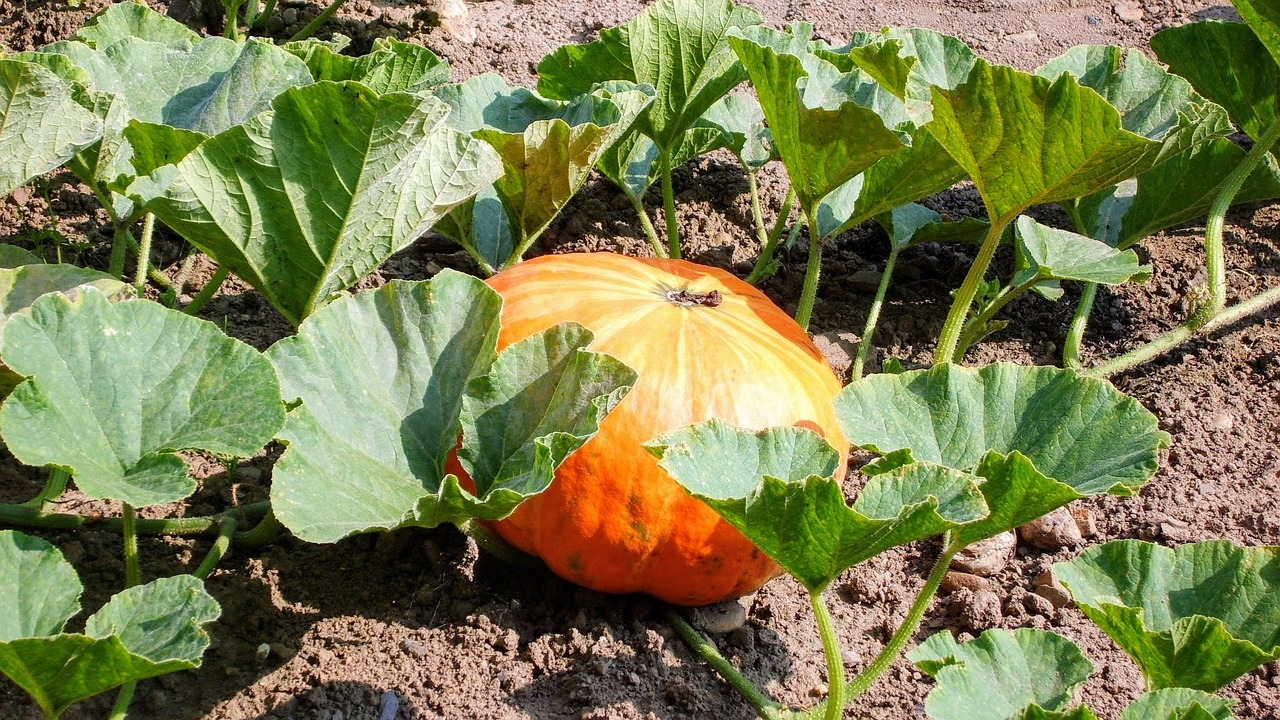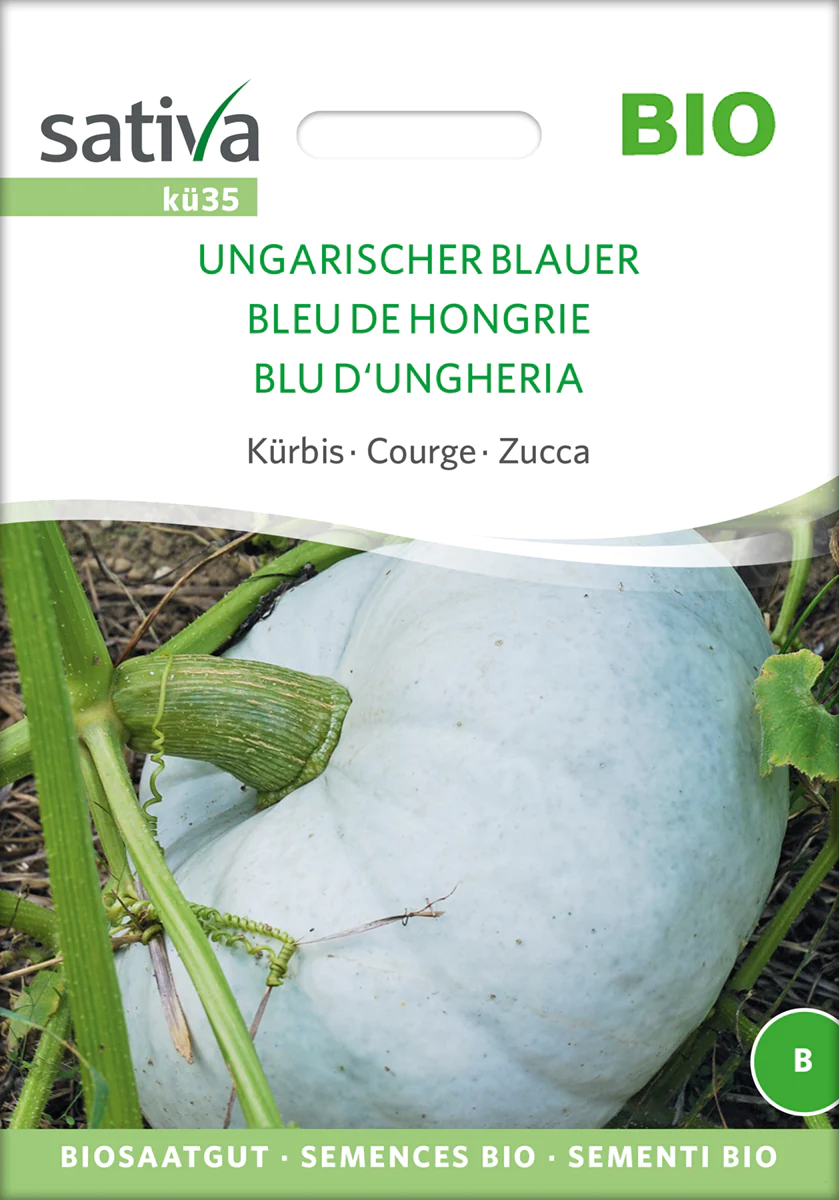A garden year with planting plans
Mixed cultivation and crop rotation with pumpkin
Pumpkins are particularly suitable as ground cover in a mixed culture. Within one season, they can cover an area of up to three square meters and provide shade with their large leaves. As a result, less water evaporates from the soil and the soil is protected from wind and water erosion. We now present you with a planting plan for your mixed cultivation with pumpkins. You can also find the planting plan in the templates under 'Mixed cultivation with pumpkin, kohlrabi, radish'.
What goes well with pumpkin?
- Beans, peas - Herbs and flowers such as chamomile, lavender, marjoram, oregano, peppermint, marigold, sunflower, marigold - Nasturtium - Garlic - Kohlrabi - Corn - Radish - Radish
January to April: Pre-cultivation
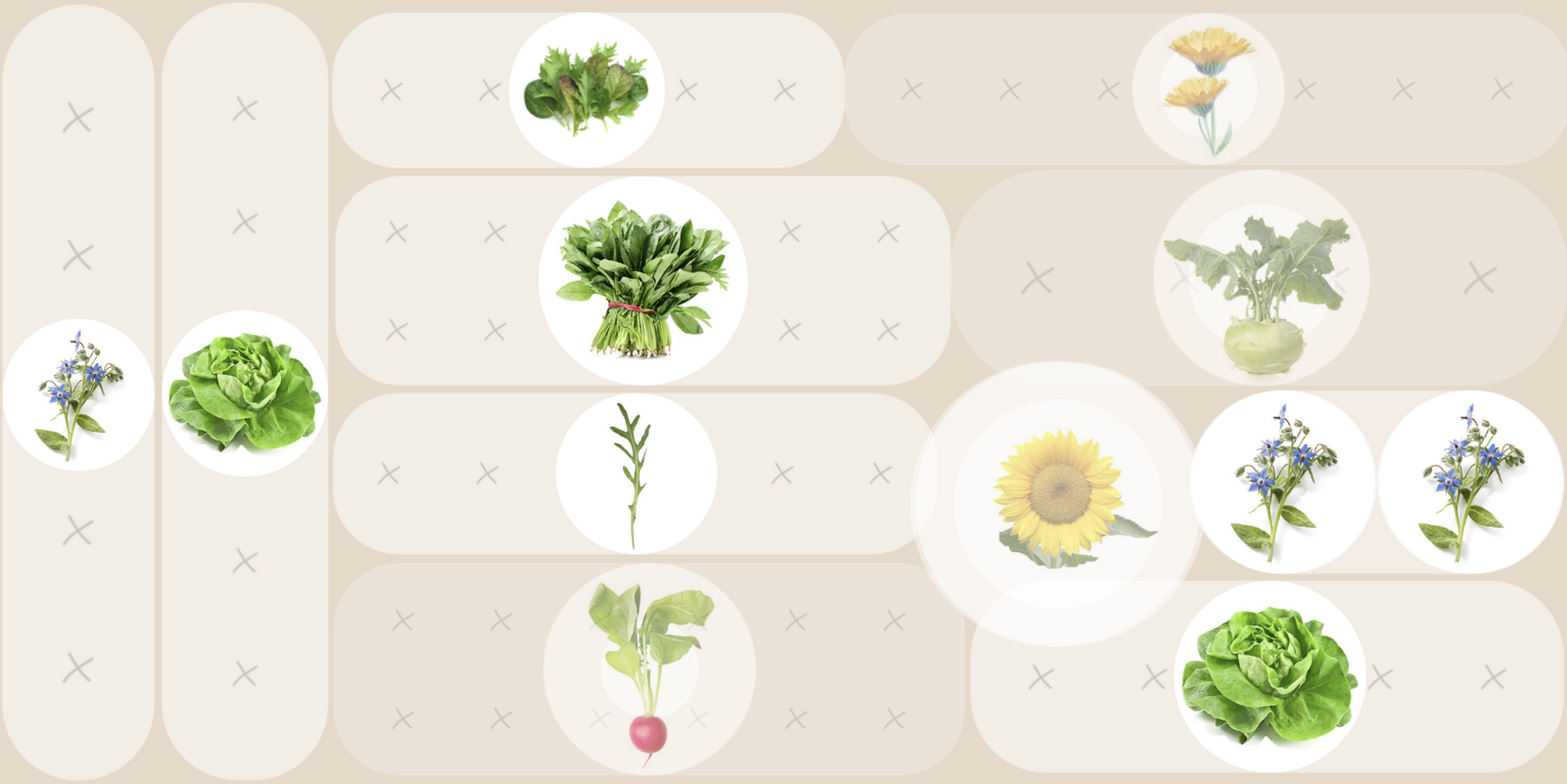
As pumpkin plants are heat-loving crops, they are only planted in the bed after the last frosts. To use your bed all year round, you can sow some cold-resistant plants in early spring: spinach, lettuce, radishes and kohlrabi. Flowers such as marigolds, sunflowers and borage can be grown on the windowsill and planted out from March.
May to September: Summer crops
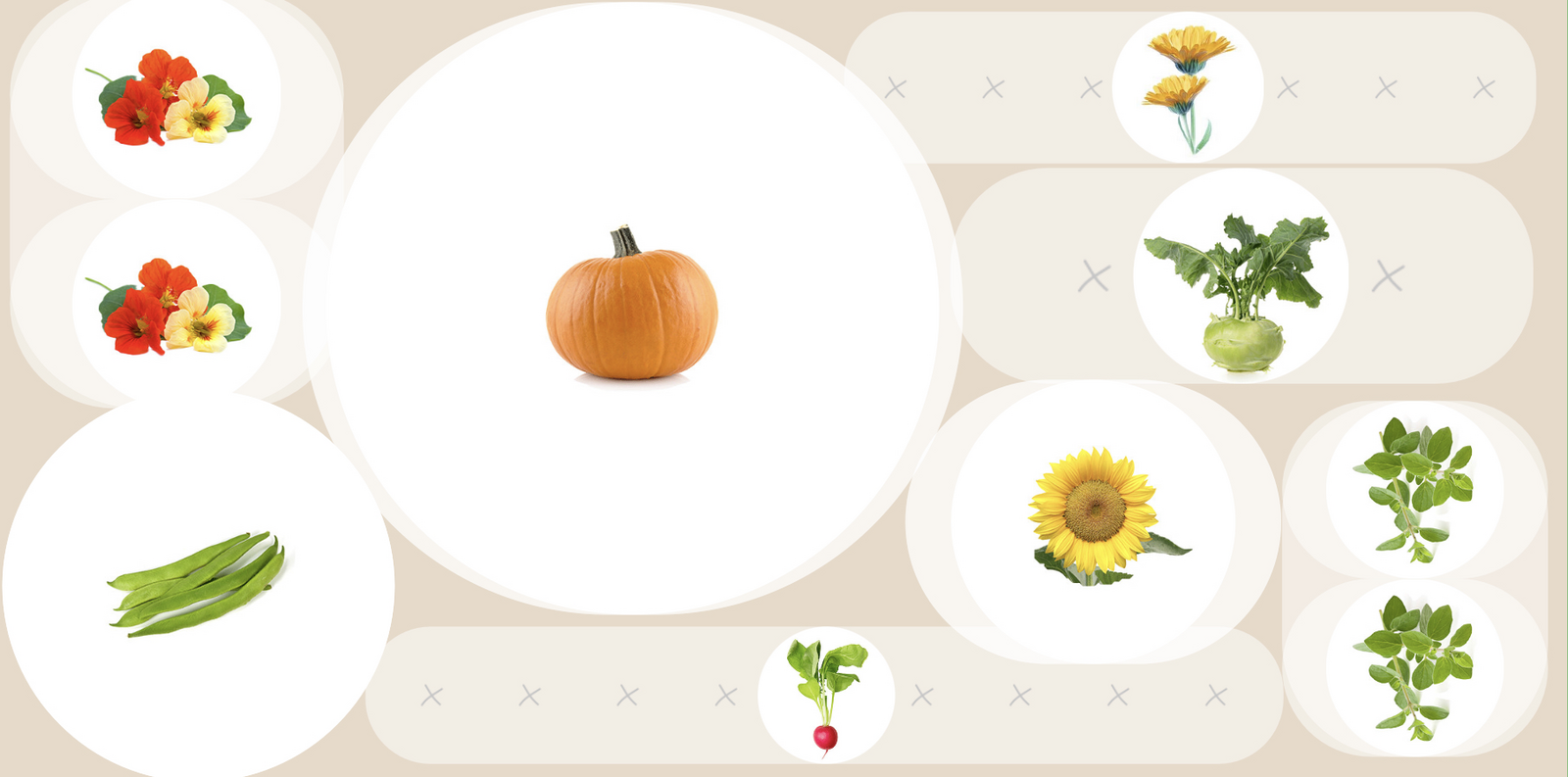
From May, the summer crops can then be planted in the bed: pumpkin, nasturtium, runner beans, oregano, basil. Pumpkin plants are usually grown on the windowsill and planted as young plants, as are nasturtiums. You can sow runner beans directly into the bed. Depending on how quickly you want to harvest the herbs, you can plant young plants or sow them directly. Your marigolds will bloom from June to October and you can harvest their leaves and flowers for tea or as decoration for salads.
October to December
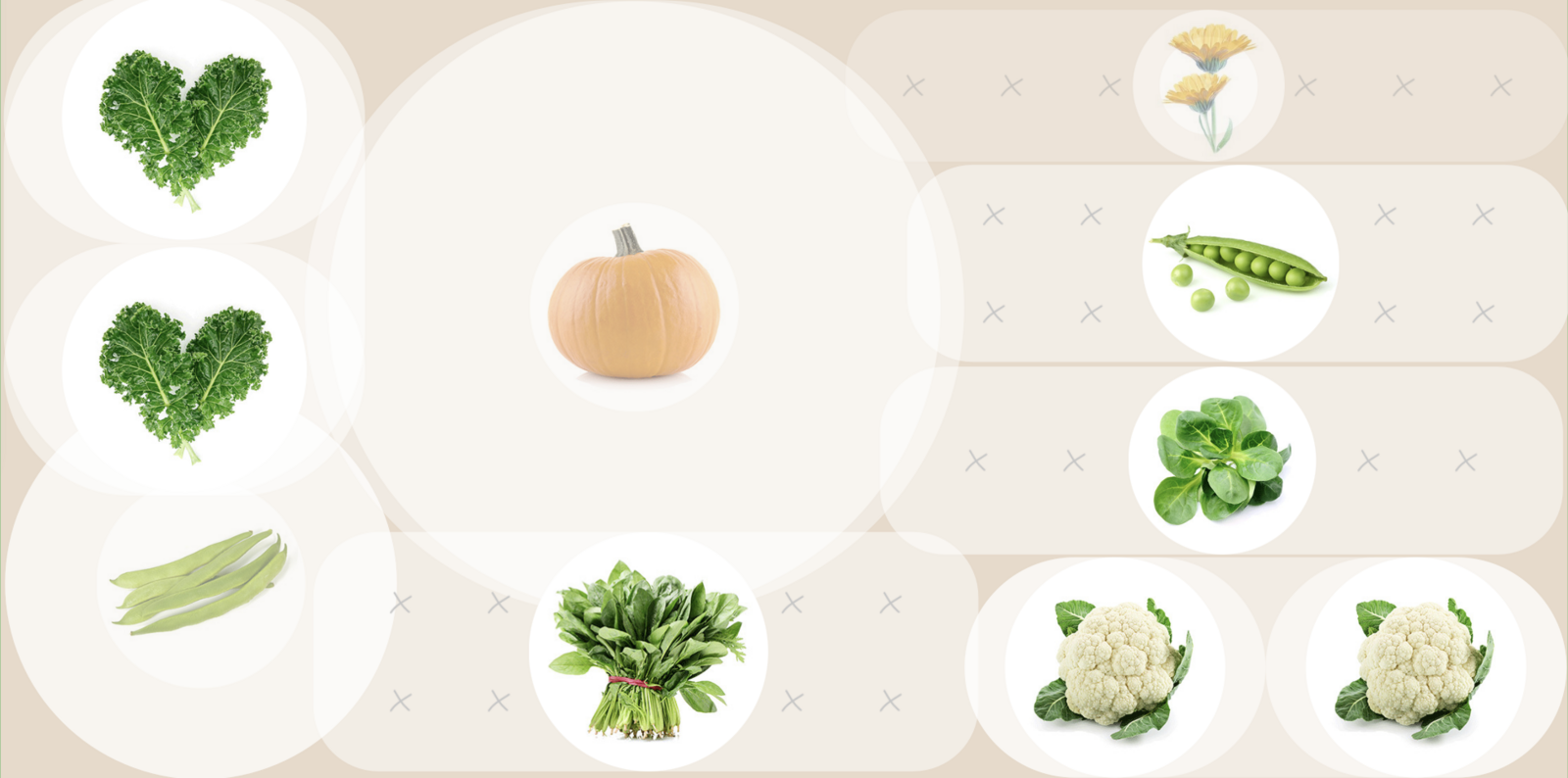
When the temperatures drop, the summer crops gradually die off. You can now plant winter vegetables such as kale and cauliflower where the nasturtiums and heat-loving herbs were. There are particularly frost-hardy varieties that can remain in the bed throughout the winter and can be harvested until April. You can also sow succession crops such as peas, spinach and lamb's lettuce. Once the pumpkin and runner beans have been harvested, you can fill in the gaps and sow more winter vegetables. Lettuce, spinach or peas are a good choice for planting after the heavy-eating pumpkin. Once all the beans have been harvested, you can plant another kale. Marigolds can flower until October. Once all the plants have withered, you can sow new crops such as lamb's lettuce.
